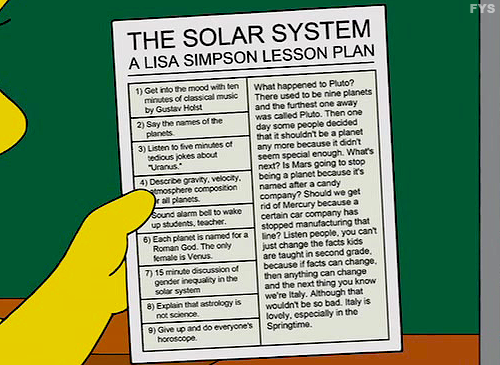Getting To Mars: 4 Things We’re Doing Now
Getting to Mars: 4 Things We’re Doing Now
We’re working hard to send humans to Mars in the 2030s. Here are just a few of the things we’re doing now that are helping us prepare for the journey:
1. Research on the International Space Station

The International Space Station is the only microgravity platform for the long-term testing of new life support and crew health systems, advanced habitat modules and other technologies needed to decrease reliance on Earth.

When future explorers travel to the Red Planet, they will need to be able to grow plants for food, atmosphere recycling and physiological benefits. The Veggie experiment on space station is validating this technology right now! Astronauts have grown lettuce and Zinnia flowers in space so far.

The space station is also a perfect place to study the impacts of microgravity on the human body. One of the biggest hurdles of getting to Mars in ensuring that humans are “go” for a long-duration mission. Making sure that crew members will maintain their health and full capabilities for the duration of a Mars mission and after their return to Earth is extremely important.

Scientists have solid data about how bodies respond to living in microgravity for six months, but significant data beyond that timeframe had not been collected…until now! Former astronaut Scott Kelly recently completed his Year in Space mission, where he spent a year aboard the space station to learn the impacts of microgravity on the human body.
A mission to Mars will likely last about three years, about half the time coming and going to Mars and about half the time on the Red Planet. We need to understand how human systems like vision and bone health are affected and what countermeasures can be taken to reduce or mitigate risks to crew members.
2. Utilizing Rovers & Tech to Gather Data

Through our robotic missions, we have already been on and around Mars for 40 years! Before we send humans to the Red Planet, it’s important that we have a thorough understanding of the Martian environment. Our landers and rovers are paving the way for human exploration. For example, the Mars Reconnaissance Orbiter has helped us map the surface of Mars, which will be critical in selecting a future human landing site on the planet.

Our Mars 2020 rover will look for signs of past life, collect samples for possible future return to Earth and demonstrate technology for future human exploration of the Red Planet. These include testing a method for producing oxygen from the Martian atmosphere, identifying other resources (such as subsurface water), improving landing techniques and characterizing weather, dust and other potential environmental conditions that could affect future astronauts living and working on Mars.

We’re also developing a first-ever robotic mission to visit a large near-Earth asteroid, collect a multi-ton boulder from its surface and redirect it into a stable orbit around the moon. Once it’s there, astronauts will explore it and return with samples in the 2020s. This Asteroid Redirect Mission (ARM) is part of our plan to advance new technologies and spaceflight experience needed for a human mission to the Martian system in the 2030s.
3. Building the Ride
Okay, so we’ve talked about how we’re preparing for a journey to Mars…but what about the ride? Our Space Launch System, or SLS, is an advanced launch vehicle that will help us explore beyond Earth’s orbit into deep space. SLS will be the world’s most powerful rocket and will launch astronauts in our Orion spacecraft on missions to an asteroid and eventually to Mars.

In the rocket’s initial configuration it will be able to take 154,000 pounds of payload to space, which is equivalent to 12 fully grown elephants! It will be taller than the Statue of Liberty and it’s liftoff weight will be comparable to 8 fully-loaded 747 jets. At liftoff, it will have 8.8 million pounds of thrust, which is more than 31 times the total thrust of a 747 jet. One more fun fact for you…it will produce horsepower equivalent to 160,000 Corvette engines!

Sitting atop the SLS rocket will be our Orion spacecraft. Orion will be the safest most advanced spacecraft ever built, and will be flexible and capable enough to carry humans to a variety of destinations. Orion will serve as the exploration vehicle that will carry the crew to space, provide emergency abort capability, sustain the crew during space travel and provide safe re-entry from deep space return velocities.
4. Making it Sustainable
When humans get to Mars, where will they live? Where will they work? These are questions we’ve already thought about and are working toward solving. Six partners were recently selected to develop ground prototypes and/or conduct concept studies for deep space habitats.

These NextSTEP habitats will focus on creating prototypes of deep space habitats where humans can live and work independently for months or years at a time, without cargo supply deliveries from Earth.

Another way that we are studying habitats for space is on the space station. In June, the first human-rated expandable module deployed in space was used. The Bigelow Expandable Activity Module (BEAM) is a technology demonstration to investigate the potential challenges and benefits of expandable habitats for deep space exploration and commercial low-Earth orbit applications.
Our journey to Mars requires preparation and research in many areas. The powerful new Space Launch System rocket and the Orion spacecraft will travel into deep space, building on our decades of robotic Mars explorations, lessons learned on the International Space Station and groundbreaking new technologies.
Make sure to follow us on Tumblr for your regular dose of space: http://nasa.tumblr.com
More Posts from Plutoisnotaplanet and Others

It’s time for a musical World Record Wednesday! The “Golden Record,” created by NASA and placed on both Voyager spacecraft in 1977, is the phonographic recording to travel farthest. Currently hurtling through space at a distance of over 12 billion miles from Earth on Voyager I, the album is literally a “world record"—a collection of sounds, songs, and short speeches intended to represent the best of planet Earth and humanity. The tracks were carefully curated by NASA and a committee chaired by Carl Sagan, and include music from Bach, Beethoven, Stravinsky, Chuck Berry, Louis Armstrong, and others. (Fun fact: the producer of the Golden Record,“ Timothy Ferris, is an award-winning science author who wrote the script for the Museum’s Space Show “Dark Universe.”)
The Record also features musical recordings from Senegal, Russia, Japan, and other countries. Carl Sagan, who worked on the project, stated that "the spacecraft will be encountered and the record played only if there are advanced space-faring civilizations in interstellar space. But the launching of this ‘bottle’ into the cosmic 'ocean’ says something very hopeful about life on this planet.”
Listen to the album on the Museum’s first-ever Spotify playlist: https://goo.gl/mogYK6
Image: NASA
Dwarf Planet
Pluto has friends that are dwarf planets. Pluto is not #Alone, so stop acting like Pluto is #Sad about #notbeingaplanet
people act like Pluto was dealt a bad hand bc they thought it was a planet but later classified it as a dwarf but consider this: there are 4 other dwarf planets in the solar system that most people don’t even know the names of so Think Again before you think Pluto is underrepresented

@nasa I can’t wait to see all the new pictures of jupiters big red spot!! Jupiter himself doesnt know why earth keeps throwing these things at him…




Jupiter has 12 newly discovered moons!! I really relate to Valetudo, for some reason…
message from pluto (SBE 5)
pro tip: don't waste ur whole summer. 'specially if you are made of ice. u have all winter to be cold hearted.
an airplane is a ufo too unless you can identify what kind of airplane it is
in biology like
EVERYTHING IS PROTEINSSS,,, EVERYTHING IS PROTEINS INSIDE OF THE CELL,,, EVERYTHING IS PROTEINSS
-
 citrus1640 liked this · 7 years ago
citrus1640 liked this · 7 years ago -
 helenadoya-blog liked this · 7 years ago
helenadoya-blog liked this · 7 years ago -
 charityskipper liked this · 7 years ago
charityskipper liked this · 7 years ago -
 best-hotels-posts reblogged this · 8 years ago
best-hotels-posts reblogged this · 8 years ago -
 earthbending-sjw liked this · 8 years ago
earthbending-sjw liked this · 8 years ago -
 destroybeginagain reblogged this · 8 years ago
destroybeginagain reblogged this · 8 years ago -
 theothersmurfette reblogged this · 8 years ago
theothersmurfette reblogged this · 8 years ago -
 transaizawas liked this · 8 years ago
transaizawas liked this · 8 years ago -
 helplessselfish liked this · 8 years ago
helplessselfish liked this · 8 years ago -
 bunnywuvspie liked this · 8 years ago
bunnywuvspie liked this · 8 years ago -
 cheezbot liked this · 8 years ago
cheezbot liked this · 8 years ago -
 thingsmydadmightlike-blog reblogged this · 8 years ago
thingsmydadmightlike-blog reblogged this · 8 years ago -
 kristenbobisten reblogged this · 8 years ago
kristenbobisten reblogged this · 8 years ago -
 the-wayward-artist liked this · 8 years ago
the-wayward-artist liked this · 8 years ago -
 cheeryheart reblogged this · 8 years ago
cheeryheart reblogged this · 8 years ago -
 ravenwolffe77 liked this · 8 years ago
ravenwolffe77 liked this · 8 years ago -
 lflnbe reblogged this · 8 years ago
lflnbe reblogged this · 8 years ago -
 haoudesoul reblogged this · 8 years ago
haoudesoul reblogged this · 8 years ago -
 badlemonx reblogged this · 8 years ago
badlemonx reblogged this · 8 years ago -
 lflnbe liked this · 8 years ago
lflnbe liked this · 8 years ago -
 riete-imbecil reblogged this · 8 years ago
riete-imbecil reblogged this · 8 years ago -
 swex7 reblogged this · 8 years ago
swex7 reblogged this · 8 years ago -
 brianfulda liked this · 8 years ago
brianfulda liked this · 8 years ago -
 alexandriaada-blog reblogged this · 8 years ago
alexandriaada-blog reblogged this · 8 years ago -
 destiny-the-panda-blog liked this · 8 years ago
destiny-the-panda-blog liked this · 8 years ago -
 gundamrp reblogged this · 8 years ago
gundamrp reblogged this · 8 years ago -
 f-taser-blog reblogged this · 8 years ago
f-taser-blog reblogged this · 8 years ago -
 f-taser-blog liked this · 8 years ago
f-taser-blog liked this · 8 years ago -
 venomshred liked this · 8 years ago
venomshred liked this · 8 years ago -
 maevetheeuropan reblogged this · 8 years ago
maevetheeuropan reblogged this · 8 years ago -
 artseam1901 liked this · 8 years ago
artseam1901 liked this · 8 years ago -
 carlosemiliopir liked this · 8 years ago
carlosemiliopir liked this · 8 years ago -
 astro-bird reblogged this · 8 years ago
astro-bird reblogged this · 8 years ago -
 goddessofblood liked this · 8 years ago
goddessofblood liked this · 8 years ago
welcome to my space space (see what i did there) (space means two different things)
232 posts

